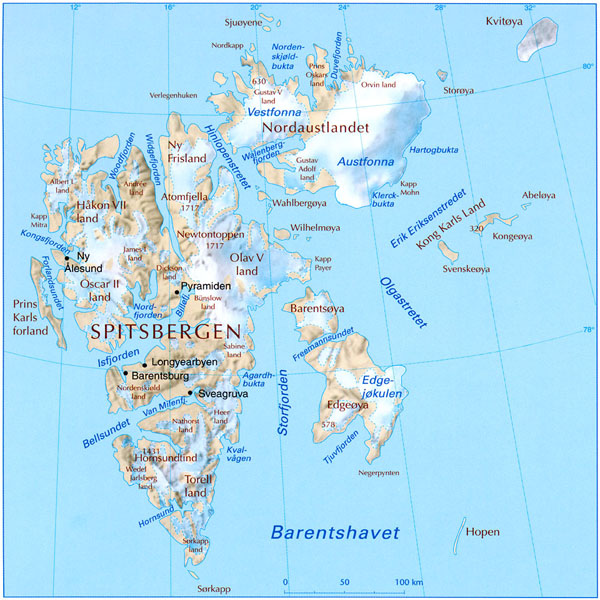Svalbard
Svalbard is a very special part of Norway. The archipelago is one of the northernmost land-areas in the world. Because it is off the beaten track, so that humans have hardly left their mark on it, most of this territory is still pristine, without roads or other signs of human intervention.
Svalbard is defined as a land area situated between 74 and 81 degrees north, between 10 and 35 degrees east. The archipelago of Svalbard consists of islands of various sizes, the largest of which are Spitzbergen, Nordaustlandet, Edgeøy, Barentsøy and Prins Karls Forland. The summit Newtontoppen, on the north-eastern part of Spitzbergen, towers 1713 metres above sea level and is the highest.
Svalbard has an area of about 61 000 square kilometres, and as much as 60 percent of the landmass is covered in ice, and less than ten percent has any vegetation. The sea area around the islands out to the territorial border of 12 nautical miles is about 90.700 square kilometers. Svalbard is surrounded by a shallow sea-shelf. The average depth of the Barents Sea is 230 metres, and the shallowest areas lie between Bjørnøya and Edgeøya. To the west and north of Svalbard, the Norwegian Sea and the Arctic Sea plummet to more than 2000 metres in depth.
There are relatively few species of plants and animals, but species may have large populations. Not many humans have lived in Svalbard since Wilhelm Barents first came in 1596, but those who did have left traces, here and there, some of which are now monuments. While there still was a busy hunting industry on Svalbard up-to around the Second World War most areas had hunters present. Research, expeditions and mining industry have also left marks in the landscape. On Spitsbergen one will still find the permanent settlements of Longyearbyen, Barentsburg, Ny-Ålesund and Sveagruva. In addition to these, there are also smaller research stations and meteorological stations in Hornsund, on Hopen and on Bjørnøya.
